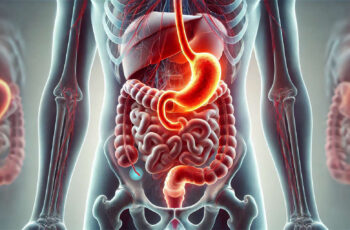Ad Blocker Detected
Our website is made possible by displaying online advertisements to our visitors. Please consider supporting us by disabling your ad blocker.
If you or someone you care about has been diagnosed with diverticulitis, you’re not alone. This condition affects millions of people worldwide, and while it can be concerning, understanding it is the first step to managing it effectively. Let’s walk through everything you need to know about diverticulitis in clear, practical terms.
What Is Diverticulitis and Why Does It Happen?
Imagine your digestive system as a garden hose. Over time, certain spots along the hose might develop small bulges where the wall is weaker. These bulges are called diverticula, and they’re actually quite common, especially as we age. When these pouches become inflamed or infected, that’s diverticulitis.
Think of it like this: these small pouches can sometimes trap tiny particles of food or stool, leading to irritation and inflammation – much like how a splinter in your finger can cause the area around it to become red and painful.
Common Signs and Symptoms: What to Watch For
When diverticulitis flares up, your body will usually let you know. The most common signs include:
Abdominal Pain
Many people describe a persistent pain, usually on the lower left side of their abdomen. This pain might:
• Start gradually and worsen over several days
• Feel worse when moving or pressing on your belly
• Change with eating or bowel movements
Other Common Symptoms
You might also experience:
• Changes in your normal bowel habits
• Fever and chills (your body’s way of fighting infection)
• Feeling more tired than usual
• Less appetite than normal
• Nausea or occasional vomiting
Getting a Proper Diagnosis: Working with Your Healthcare Team
If you’re experiencing these symptoms, it’s important to get checked out. Your healthcare provider will work with you to determine what’s going on. Here’s what you can expect during your visit:
The Conversation
Your doctor will want to hear your story. They’ll ask about:
• When your symptoms started
• What makes them better or worse
• Your regular eating habits
• Any previous digestive issues
• Medications you’re taking
This isn’t just small talk – these details help paint a clear picture of your situation.
Physical Examination
Your doctor will likely:
• Gently examine your abdomen to check for tender areas
• Take your temperature
• Check your vital signs
Think of this as gathering clues to solve a puzzle. Each piece of information helps determine the best way to help you feel better.
Tests You Might Need
Don’t be alarmed if your doctor recommends some tests. These might include:
Blood Tests
These help show if your body is fighting an infection. Think of them as your body’s report card – they tell your doctor how severe the inflammation might be.
Imaging Tests
Your doctor might recommend:
• A CT scan: Think of this as a detailed 3D map of your digestive system
• An ultrasound: A gentle way to look inside using sound waves
Understanding Your Genes and Risk Factors
While we can’t choose our genes, understanding how they affect our health can help us make better decisions. Some families have a higher tendency to develop diverticulitis, just like some families might share similar features or health traits.
What This Means for You:
• If your parents or siblings have diverticulitis, it’s worth mentioning to your doctor
• This information helps create a more personalized prevention plan
• It doesn’t mean you’ll definitely develop the condition, but awareness helps
Living with Diverticulitis: Treatment and Daily Management
When it comes to treating diverticulitis, there’s no one-size-fits-all approach. Your treatment plan will depend on how severe your symptoms are and your overall health.
During a Flare-Up:
Mild cases often improve with:
• A short period of liquid or soft foods to rest your digestive system
• Antibiotics if your doctor prescribes them
• Plenty of rest
• Over-the-counter pain relief as recommended by your doctor
Think of this as giving your digestive system a brief vacation to heal and recover.
Prevention and Long-Term Management
Once you’re feeling better, focus on preventing future episodes:
Eating Well for Your Gut
A healthy diet is your first line of defence:
• Gradually increase fibre-rich foods like fruits, vegetables, and whole grains
• Stay well-hydrated – think of water as your digestive system’s best friend
• Consider keeping a food diary to identify what works best for you
Smart Lifestyle Choices:
• Regular exercise, even just daily walks, helps keep your digestive system moving
• Manage stress through activities you enjoy
• Maintain a healthy weight
• Don’t ignore the urge to have a bowel movement
Your Nutrition Toolbox
Think of food as medicine for your digestive system. Here’s how to stock your kitchen for success:
Fiber-Rich Foods to Include:
• Soft, cooked vegetables
• Ripe fruits without seeds
• Whole grain breads and cereals
• Legumes like lentils and well-cooked beans
Foods that typically help:
• Yogurt with active cultures
• Lean proteins like fish and chicken
• Soft, cooked fruits
• Smooth nut butters
Remember to introduce these foods gradually – think of it as training your digestive system rather than overwhelming it.
Share the Health Journey
Living with diverticulitis is easier when you’re not alone. Consider:
• Joining a support group where you can share experiences and tips
• Talking openly with family members about your needs
• Sharing this information with others who might benefit
• Creating a network of friends who understand your dietary needs
Remember, your experience might help someone else on their health journey. By sharing what you’ve learned, you could make someone else’s path a little easier.
Disclaimer:
This guide is meant to help you understand and manage diverticulitis better, but it’s not a replacement for professional medical care. Every person’s situation is unique, and what works for one person might not work for another. Always consult with your healthcare provider before making changes to your diet or treatment plan. They know your specific situation best and can provide personalized advice for your needs.




